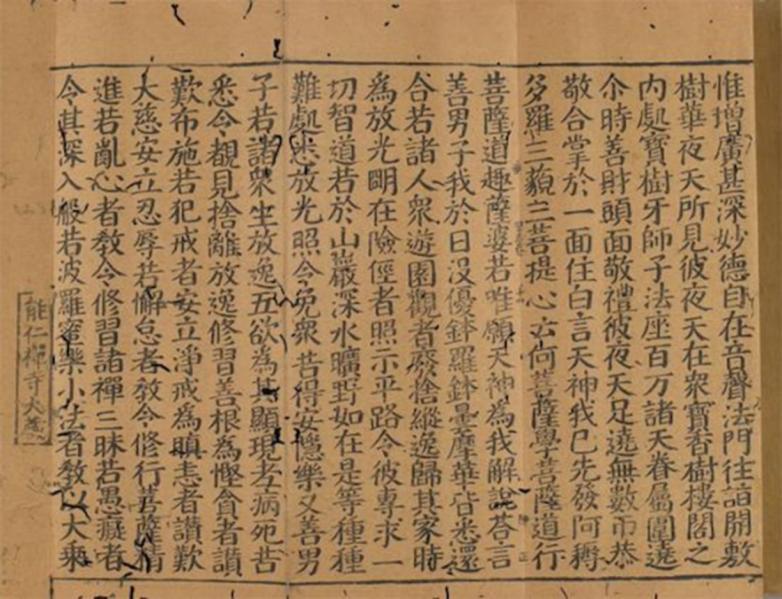Huntington to Exhibit Its Oldest Printed Book

Unknown author, Dafangguang fo huayan jing, fascicle 45, 1085, ink on paper
The Huntington Library, Art Museum, and Botanical Gardens will exhibit for the first time the oldest printed book in its collection, The Scripture of the Great Flower Ornament of the Buddha.
Printed in 1085: The Chinese Buddhist Canon from the Song Dynasty, an exhibition on view in the Library’s West Hall from April 29 through December 4, 2023, will dive into the circumstances of the book’s creation and its religious significance while broadening visitors’ understanding of Chinese textual tradition. Additional materials related to the text will also be on display to provide historical context.
“A specially designed display case will allow Huntington visitors to have a unique experience when viewing this sacred text,” said Li Wei Yang, curator of the Pacific Rim collections at The Huntington. “Though the book was meant to be read by flipping from one page to the next, here it will be expanded in a custom case designed for maximum visibility, offering a rare opportunity to view this miraculously preserved relic and observe its unique bibliographic characteristics and exquisiteness.”
More than 900 years old, the book is part of the 5,850-volume Great Canon of the Eternal Longevity of the Chongning Reign Period. Produced during the Song dynasty (960–1279) between 1080 and 1112, the accordion-style book unfolds to a length of 31 feet, 21 feet of which will be on display. It is one of the longest sutras, or collection of aphorisms, in the Buddhist canon and is a compendium of doctrines and ritual practices widely followed throughout East Asia.
The text presents a vision of the entire universe as consisting of elements that all interpenetrate (like mirrors reflecting in mirrors) within the body of the Cosmic Buddha. “In short, it reflects the notion that ‘I am you, you are me; we all are Buddha,’” Yang said.
It is not known whether the Buddha himself actually spoke the words found in the Scripture of the Great Flower Ornament. Rather, it is likely that his followers, over centuries of adaptation and interpretation, incorporated the essence of his teachings into this and many other Buddhist works that have survived.
Printed in 1085 will show the connection between religion and China’s printmaking, which had been practiced centuries before the first use of movable metal type in Europe. Emperor Taizu, who ruled from 960 to 976 CE, wanted to disseminate Buddhist teachings, which led to the acceleration of woodblock printing in China.
During the creation of the Scripture of the Great Flower Ornament, Chongzhen - an abbot at the Dongchan Temple in Fuzhou, China - led a large team of monks and artisans to cut and ink more than 165,000 woodblocks, printing 5,850 volumes of the Great Canon of the Eternal Longevity of the Chongning Reign Period, or the Chongning Canon. It was one of the most time- and resource-intensive printing projects ever undertaken in China’s imperial history.
Today, there are no remnants of the Dongchan Temple or the original woodblocks, and incomplete collections of the Chongning Canon volumes are scattered in libraries and private collections throughout Asia, Europe, and North America, all of which makes The Huntington’s volume of the Chongning Canon an especially valuable historical artifact.















